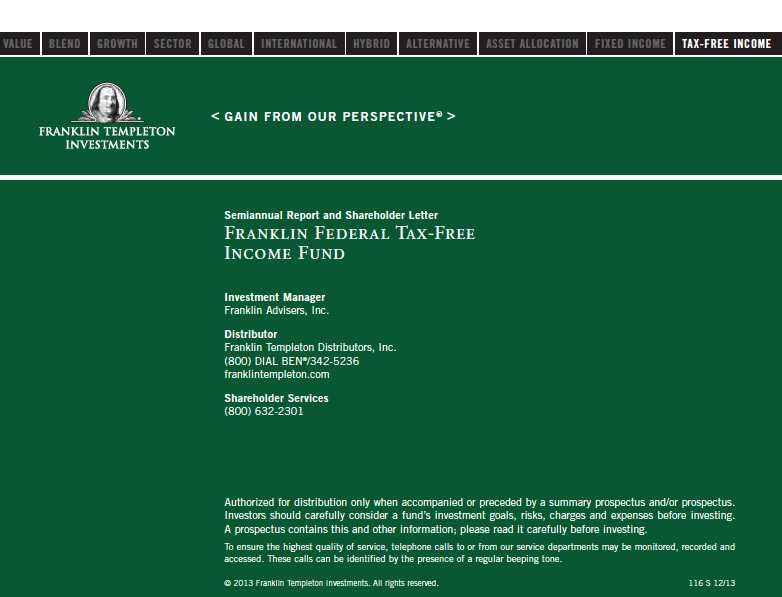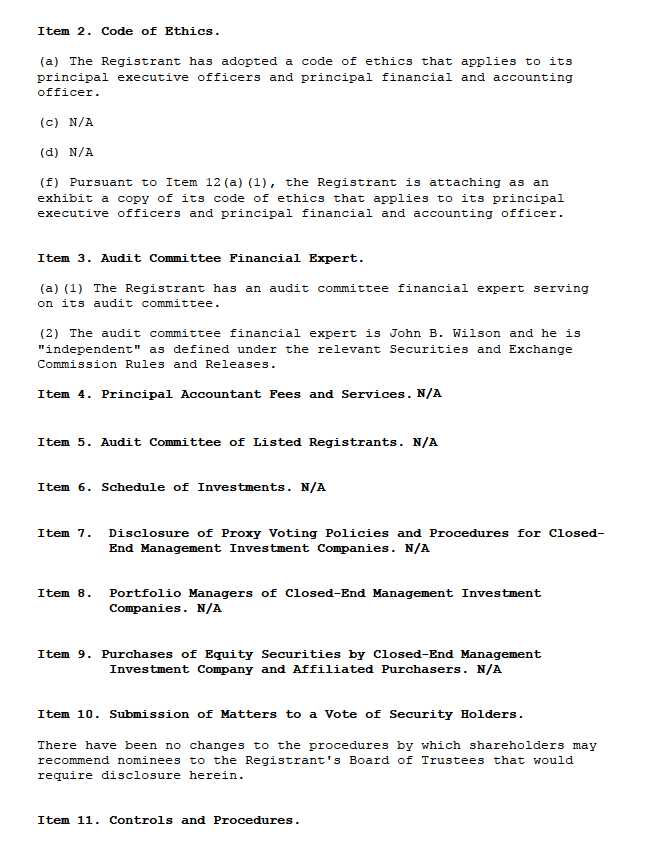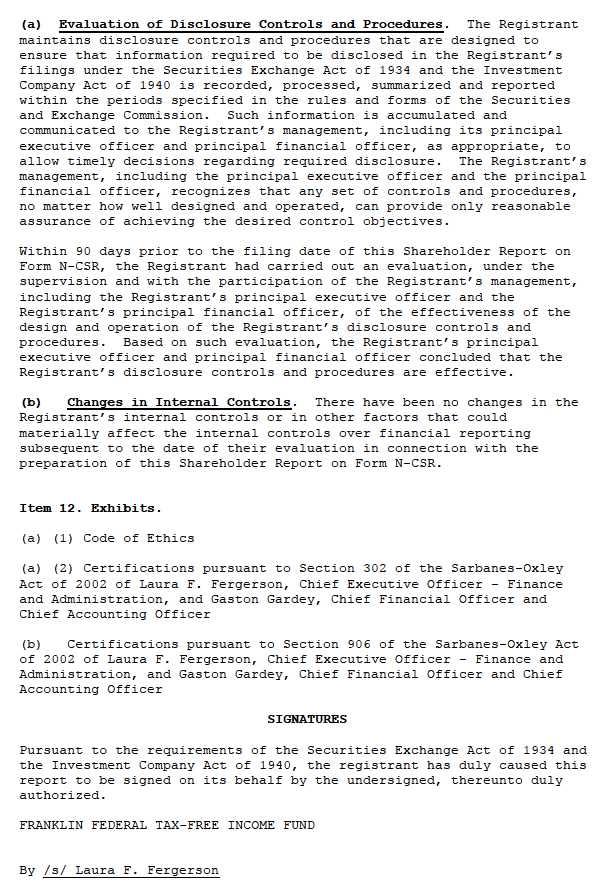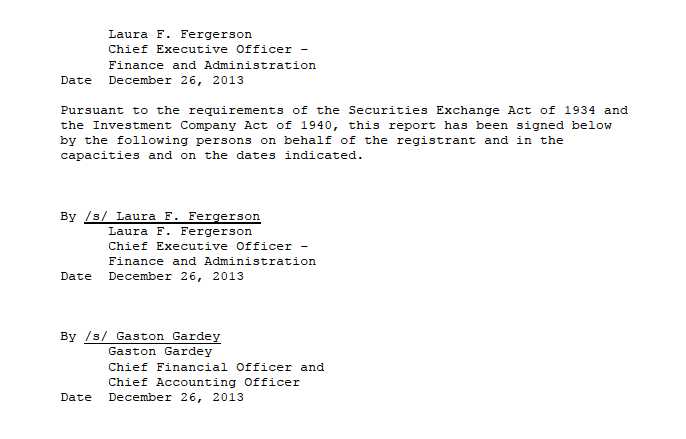
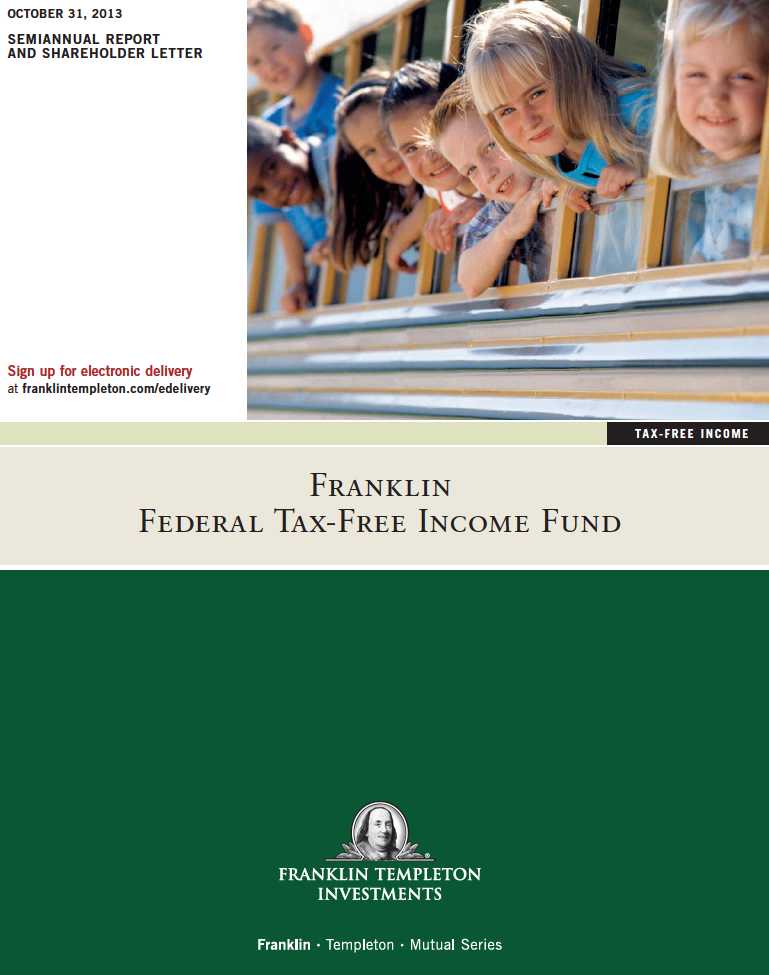


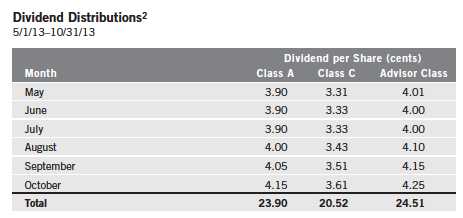
reporting period the Fund’s Class A shares’ distribution rate was 4.01% based on an annualization of October’s 4.15 cent per share dividend and the maximum offering price of $12.41 on October 31, 2013. An investor in the 2013 maximum federal personal income tax bracket of 39.60% (plus 3.8% Medicare tax) would need to earn a distribution rate of 7.08% from a taxable investment to match the Fund’s Class A tax-free distribution rate. For the Fund’s Class C and Advisor shares’ performance, please see the Performance Summary.
Municipal Bond Market Overview
During the six-month period ended October 31, 2013, the municipal bond market suffered a sharp sell-off, leading municipal bonds to be among the worst fixed income performers. The Barclays Municipal Bond Index, which tracks investment-grade municipal securities, had a -3.44% total return for the six-month period after a 5.06% drop from June through August.3 In comparison, the Barclays U.S. Treasury Index had a -2.22% six-month return.3
In May, Federal Reserve Board (Fed) Chairman Ben Bernanke spoke to Congress and said that the Fed could begin tapering its bond buying in the coming months. As a result of his comments, interest rates rose rapidly and the municipal bond and Treasury markets dramatically lost value. Fears of declining bond prices were heightened when minutes from the Fed’s July meeting included more discussion of tapering. Municipal bond mutual funds experienced persistent, large outflows that accelerated during August. Selling in the Treasury and municipal bond markets caused yields on longer term bonds to rise faster than yields on shorter maturity bonds in both markets,
3. Source: © 2013 Morningstar. All Rights Reserved. The information contained herein: (1) is proprietary to Morningstar and/or its content providers; (2) may not be copied or distributed; and (3) is not warranted to be accurate, complete or timely. Neither Morningstar nor its content providers are responsible for any damages or losses arising from any use of this information.
Semiannual Report | 5
but the yield difference was more pronounced for municipal bonds. Because bond yields move in the opposite direction from prices, the yield changes led to two significant developments during the six months — municipal bonds underperformed Treasury bonds and longer term municipal bonds fared worse than shorter term municipal bonds. Longer term municipal bonds experienced double the loss of the Barclays Municipal Bond Index. In September, the Fed decided not to begin tapering and said it would maintain the current level of bond purchases and wait for more evidence of sustained economic growth. As a result, the municipal bond market posted positive returns for the months of September and October.
The changes in municipal bond yields were noteworthy when weighed against the volume of newly issued municipal bonds. Thus far, 2013 is on pace to be the third consecutive year in which more municipal bonds are redeemed than newly issued. Despite the contraction to the overall size of the municipal bond market, investors drove yields upward, especially for bonds with longer maturities.
Declining municipal bond prices during the period under review were not solely attributable to a general increase in interest rates. Several headline stories shook investor confidence in the municipal bond asset class. The City of Detroit, Michigan, filed for bankruptcy, the largest municipal bankruptcy filing in U.S. history. In March, independent credit rating agencies Standard & Poor’s and Fitch Ratings lowered Puerto Rico general obligation debt to one step above non-investment grade (junk status). The City of Chicago suffered a three-notch downgrade by Moody’s Investors Service, another independent credit rating agency. In addition to specific credit rating stories, reports from rating agencies and research organizations cited underfunded pension liabilities among several states and large municipalities that could affect their fiscal stability. Bonds issued by municipalities involved in such stories have often experienced price erosion in secondary trading, but the extent of price erosion and the contagion to related issues have been unpredictable. Fallout from such headlines during the past six months was no exception. Bonds issued by Detroit or closely related issuers sold off sharply, but Michigan bonds included in the Barclays Municipal Bond Index performed in line with the index. Unlike Detroit, Illinois and Puerto Rico issues sold off more broadly and underperformed the index. For the Fund, exposure to Puerto Rico debt was a source of drag on performance during the reporting period.
As of October 31, 2013, municipal bond yields exceeded those of comparable maturity Treasury bonds and many other high-quality bonds. Their tax-exempt nature and historically low default rate enhanced municipal bonds’ relative value.
6 | Semiannual Report
At period-end, we maintained our positive view of the municipal bond market. We believe municipal bonds continue to be an attractive asset class among fixed income securities, and we intend to follow our solid discipline of investing to help maximize income while seeking value in the municipal bond market.
Investment Strategy
We use a consistent, disciplined strategy in an effort to maximize tax-exempt income for our shareholders by seeking to maintain exposure to higher coupon securities while balancing risk and return within the Fund’s range of allowable investments. We generally employ a buy-and-hold approach and invest in securities we believe should provide the most relative value in the market. We do not use leverage or derivatives, nor do we use hedging techniques that could add volatility and contribute to underperformance in adverse markets. We generally seek to stay close to fully invested to help maximize income distribution.
Manager’s Discussion
Puerto Rico’s municipal bond market is widely traded because of its dual tax-exemption advantages. During the reporting period, some Puerto Rico issuers experienced downgrades from Standard & Poor’s, Moody’s and Fitch that contributed to the underperformance of Puerto Rico bonds held in the Fund. The Puerto Rico bond market experienced a marked decline in prices worsened by negative publicity about the island’s fiscal situation.
Our value-oriented philosophy of investing primarily for income and stability of principal, when combined with a positive-sloping municipal yield curve, led us to favor longer term bonds during the six months under review. Consistent with our strategy, we sought to remain invested in bonds typically ranging from 15 to 30 years in maturity with good call features. Our relative-value, income-oriented philosophy also led the Fund to maintain its positions in higher coupon bonds, which provided income performance during the reporting period. We believe our conservative, buy-and-hold investment strategy can help us achieve high, current, tax-free income for shareholders.
Thank you for your continued participation in Franklin Federal Tax-Free Income Fund. We look forward to serving your future investment needs.
The foregoing information reflects our analysis, opinions and portfolio holdings as of October 31, 2013, the end of the reporting period. The way we implement our main investment strategies and the resulting portfolio holdings may change depending on factors such as market and economic conditions. These opinions may not be relied upon as investment advice or an offer for a particular security. The information is not a complete analysis of every aspect of any market, country, industry, security or the Fund. Statements of fact are from sources considered reliable, but the investment manager makes no representation or warranty as to their completeness or accuracy. Although historical performance is no guarantee of future results, these insights may help you understand our investment management philosophy.

*Does not include short-term investments and other net assets.
Semiannual Report | 7
Performance Summary as of 10/31/13
Your dividend income will vary depending on dividends or interest paid by securities in the Fund’s portfolio, adjusted for operating expenses of each class. Capital gain distributions are net profits realized from the sale of portfolio securities. The performance table does not reflect any taxes that a shareholder would pay on Fund dividends, capital gain distributions, if any, or any realized gains on the sale of Fund shares. Total return reflects reinvestment of the Fund’s dividends and capital gain distributions, if any, and any unrealized gains or losses.
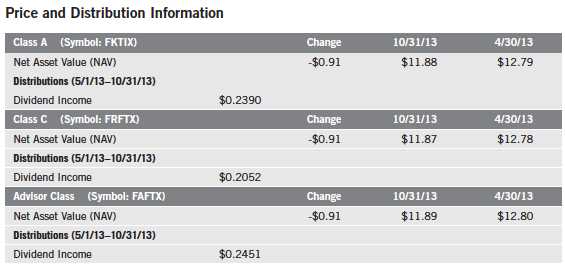
8 | Semiannual Report
Performance Summary (continued)
Performance
Cumulative total return excludes sales charges. Average annual total returns include maximum sales charges. Class A: 4.25% maximum initial sales charge; Class C: 1% contingent deferred sales charge in first year only; Advisor Class: no sales charges.
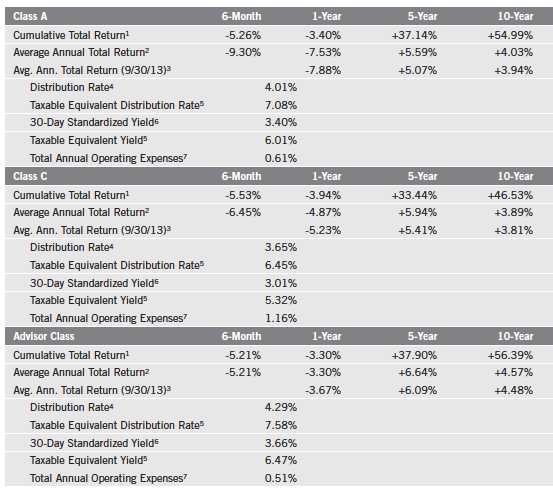
Performance data represent past performance, which does not guarantee future results. Investment return and principal value will fluctuate, and you may have a gain or loss when you sell your shares. Current performance may differ from figures shown. For most recent month-end performance, go to franklintempleton.com or call (800) 342-5236.
Semiannual Report | 9
Performance Summary (continued)
Endnotes
All investments involve risks, including possible loss of principal. Because municipal bonds are sensitive to interest rate movements, the Fund’s yield and share price will fluctuate with market conditions. Bond prices generally move in the opposite direction of interest rates. Thus, as prices of bonds in the Fund adjust to a rise in interest rates, the Fund’s share price may decline. To the extent the Fund has significant investments in a particular state or U.S. territory, such as Puerto Rico, changes impacting the market value of these investments may cause the Fund’s share price to decline. Changes in the credit rating of a bond issuer, or in the credit rating or financial strength of a bond’s issuer, insurer or guarantor, may affect the bond’s value. The Fund may invest a significant part of its assets in municipal securities that finance similar types of projects, such as utilities, hospitals, higher education and transportation. A change that affects one project would likely affect all similar projects, thereby increasing market risk. The Fund is actively managed but there is no guarantee that the manager’s investment decisions will produce the desired results. The Fund’s prospectus also includes a description of the main investment risks.
Class C: | Prior to 1/1/04, these shares were offered with an initial sales charge; thus actual total returns would have differed. These shares have higher annual fees and expenses than Class A shares. |
Advisor Class: | Shares are available to certain eligible investors as described in the prospectus. |
1. Cumulative total return represents the change in value of an investment over the periods indicated.
2. Average annual total return represents the average annual change in value of an investment over the periods indicated. Six-month return has not been annualized.
3. In accordance with SEC rules, we provide standardized average annual total return information through the latest calendar quarter.
4. Distribution rate is based on an annualization of the respective class’s October dividend and the maximum offering price (NAV for Classes C and Advisor) per share on 10/31/13.
5. Taxable equivalent distribution rate and yield assume the 2013 maximum federal income tax rate of 39.60% plus 3.8% Medicare tax.
6. The 30-day standardized yield for the 30 days ended 10/31/13 reflects an estimated yield to maturity (assuming all portfolio securities are held to maturity). It should be regarded as an estimate of the Fund’s rate of investment income, and it may not equal the Fund’s actual income distribution rate (which reflects the Fund’s past dividends paid to shareholders) or the income reported in the Fund’s financial statements.
7. Figures are as stated in the Fund’s current prospectus. In periods of market volatility, assets may decline significantly, causing total annual Fund operating expenses to become higher than the figures shown.
10 | Semiannual Report
Your Fund’s Expenses
As a Fund shareholder, you can incur two types of costs:
- Transaction costs, including sales charges (loads) on Fund purchases; and
- Ongoing Fund costs, including management fees, distribution and service (12b-1) fees, and other Fund expenses. All mutual funds have ongoing costs, sometimes referred to as operating expenses.
The following table shows ongoing costs of investing in the Fund and can help you understand these costs and compare them with those of other mutual funds. The table assumes a $1,000 investment held for the six months indicated.
Actual Fund Expenses
The first line (Actual) for each share class listed in the table provides actual account values and expenses. The “Ending Account Value” is derived from the Fund’s actual return, which includes the effect of Fund expenses.
You can estimate the expenses you paid during the period by following these steps. Of course, your account value and expenses will differ from those in this illustration:
| 1. | Divide your account value by $1,000. |
| If an account had an $8,600 value, then $8,600 ÷ $1,000 = 8.6. | |
| 2. | Multiply the result by the number under the heading “Expenses Paid During Period.” |
| If Expenses Paid During Period were $7.50, then 8.6 x $7.50 = $64.50. |
In this illustration, the estimated expenses paid this period are $64.50.
Hypothetical Example for Comparison with Other Funds
Information in the second line (Hypothetical) for each class in the table can help you compare ongoing costs of investing in the Fund with those of other mutual funds. This information may not be used to estimate the actual ending account balance or expenses you paid during the period. The hypothetical “Ending Account Value” is based on the actual expense ratio for each class and an assumed 5% annual rate of return before expenses, which does not represent the Fund’s actual return. The figure under the heading “Expenses Paid During Period” shows the hypothetical expenses your account would have incurred under this scenario. You can compare this figure with the 5% hypothetical examples that appear in shareholder reports of other funds.
Semiannual Report | 11
Your Fund’s Expenses (continued)
Please note that expenses shown in the table are meant to highlight ongoing costs and do not reflect any transaction costs, such as sales charges. Therefore, the second line for each class is useful in comparing ongoing costs only, and will not help you compare total costs of owning different funds. In addition, if transaction costs were included, your total costs would have been higher. Please refer to the Fund prospectus for additional information on operating expenses.
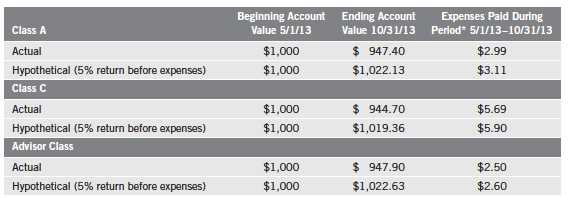
*Expenses are calculated using the most recent six-month expense ratio, annualized for each class (A: 0.61%; C: 1.16%; and Advisor: 0.51%), multiplied by the average account value over the period, multiplied by 184/365 to reflect the one-half year period.
12 | Semiannual Report
Franklin Federal Tax-Free Income Fund
Financial Highlights
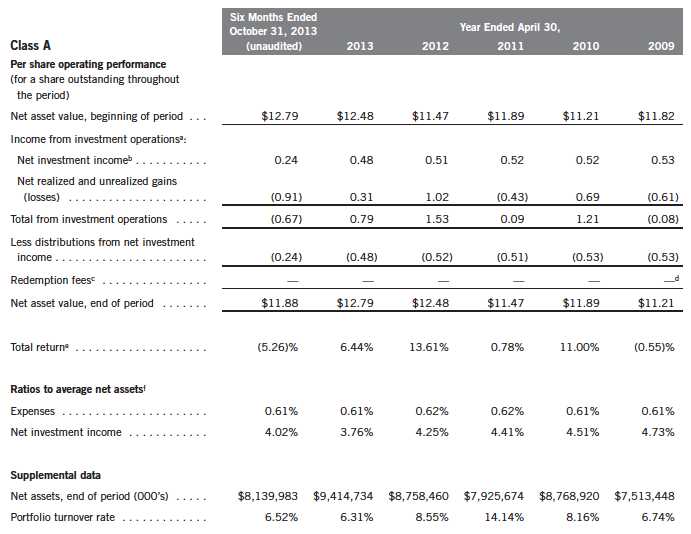
aThe amount shown for a share outstanding throughout the period may not correlate with the Statement of Operations for the period due to the timing of sales and repurchases of
the Fund shares in relation to income earned and/or fluctuating market value of the investments of the Fund.
bBased on average daily shares outstanding.
cEffective September 1, 2008, the redemption fee was eliminated.
dAmount rounds to less than $0.01 per share.
eTotal return does not reflect sales commissions or contingent deferred sales charges, if applicable, and is not annualized for periods less than one year.
fRatios are annualized for periods less than one year.
Semiannual Report | The accompanying notes are an integral part of these financial statements. | 13
Franklin Federal Tax-Free Income Fund
Financial Highlights (continued)
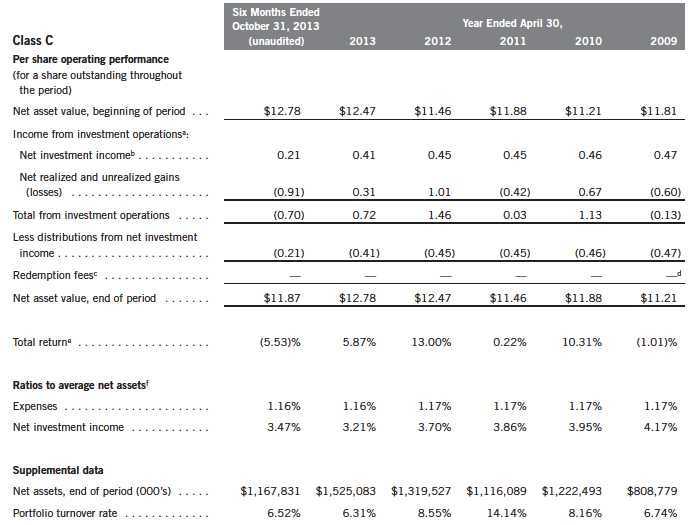
aThe amount shown for a share outstanding throughout the period may not correlate with the Statement of Operations for the period due to the timing of sales and repurchases of
the Fund shares in relation to income earned and/or fluctuating market value of the investments of the Fund.
bBased on average daily shares outstanding.
cEffective September 1, 2008, the redemption fee was eliminated.
dAmount rounds to less than $0.01 per share.
eTotal return does not reflect sales commissions or contingent deferred sales charges, if applicable, and is not annualized for periods less than one year.
fRatios are annualized for periods less than one year.
14 | The accompanying notes are an integral part of these financial statements. | Semiannual Report
Franklin Federal Tax-Free Income Fund
Financial Highlights (continued)
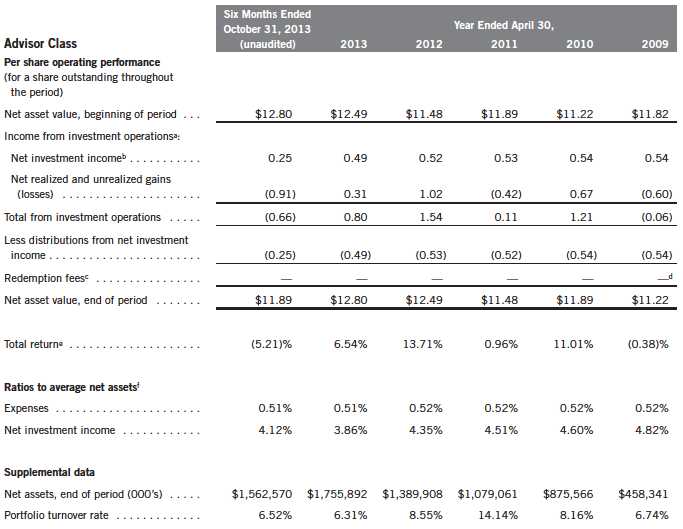
aThe amount shown for a share outstanding throughout the period may not correlate with the Statement of Operations for the period due to the timing of sales and repurchases of
the Fund shares in relation to income earned and/or fluctuating market value of the investments of the Fund.
bBased on average daily shares outstanding.
cEffective September 1, 2008, the redemption fee was eliminated.
dAmount rounds to less than $0.01 per share.
eTotal return is not annualized for periods less than one year.
fRatios are annualized for periods less than one year.
Semiannual Report | The accompanying notes are an integral part of these financial statements. | 15
Franklin Federal Tax-Free Income Fund
Statement of Investments, October 31, 2013 (unaudited)
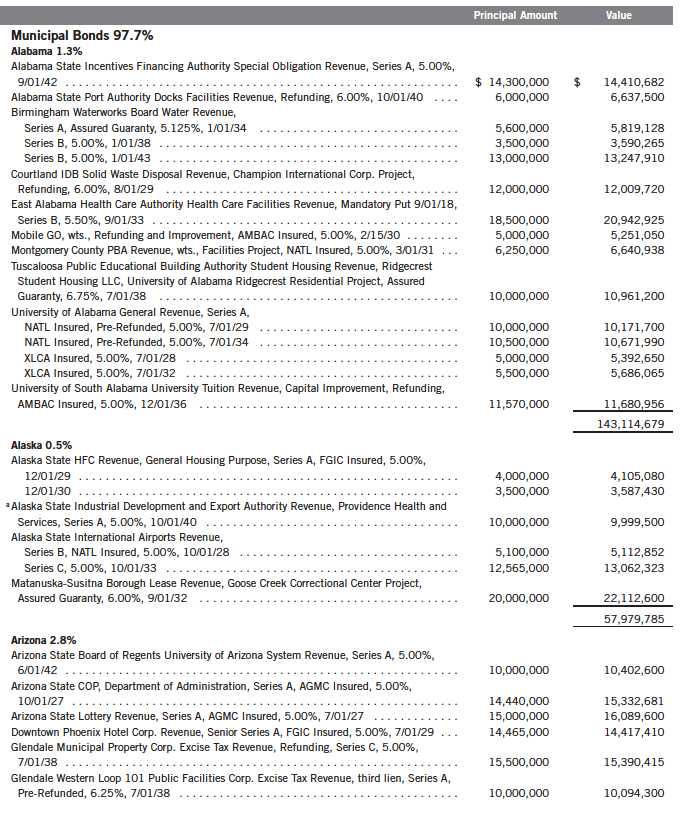
16 | Semiannual Report
Franklin Federal Tax-Free Income Fund
Statement of Investments, October 31, 2013 (unaudited) (continued)
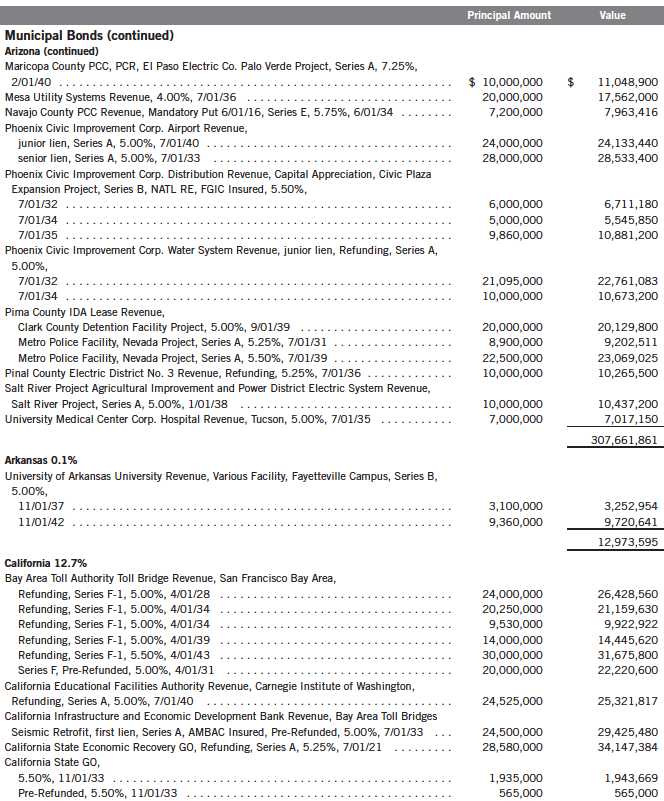
Semiannual Report | 17
Franklin Federal Tax-Free Income Fund
Statement of Investments, October 31, 2013 (unaudited) (continued)
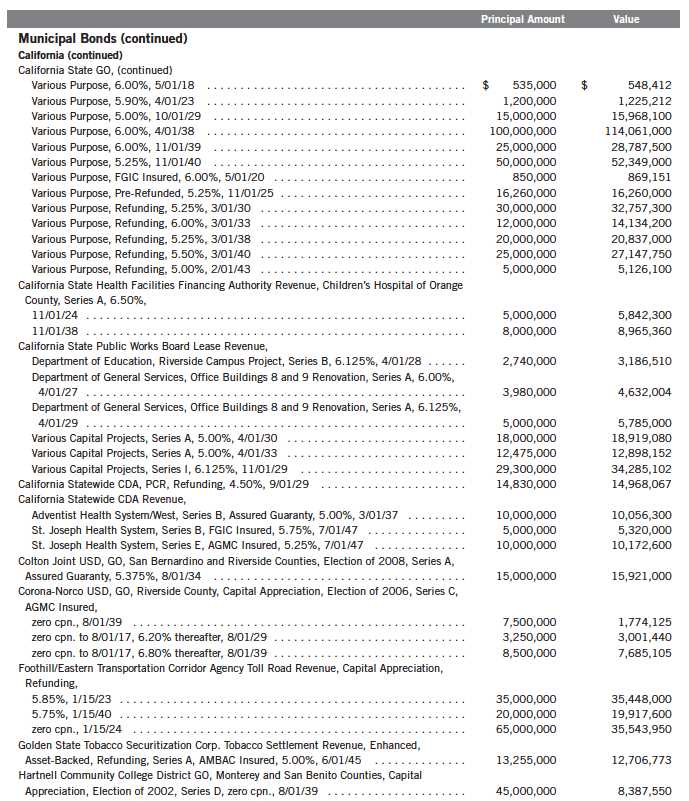
18 | Semiannual Report
Franklin Federal Tax-Free Income Fund
Statement of Investments, October 31, 2013 (unaudited) (continued)
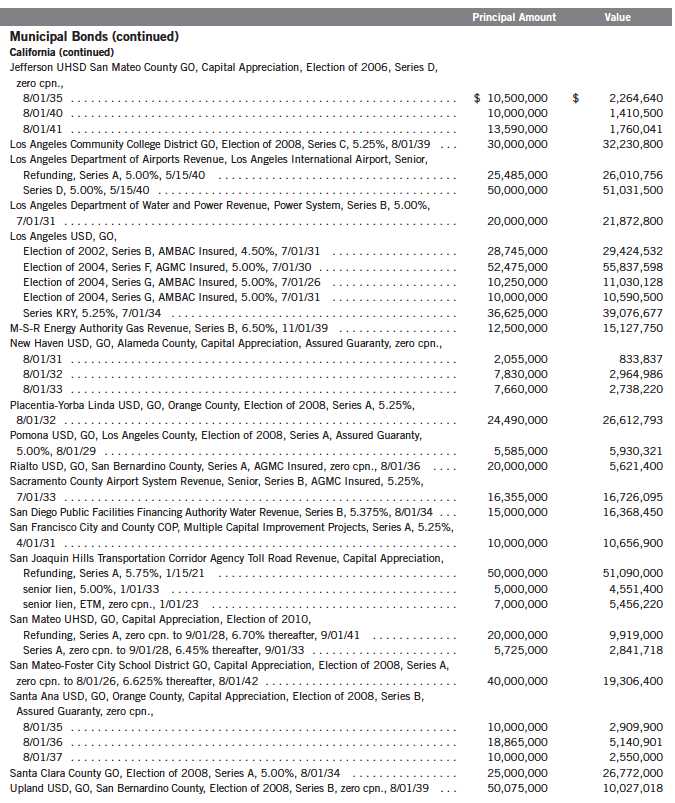
Semiannual Report | 19
Franklin Federal Tax-Free Income Fund
Statement of Investments, October 31, 2013 (unaudited) (continued)
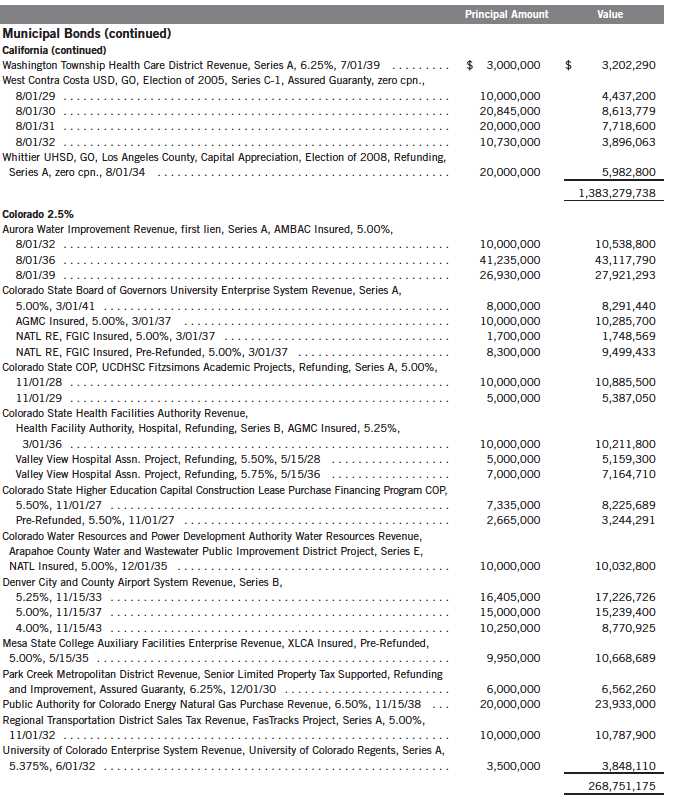
20 | Semiannual Report
Franklin Federal Tax-Free Income Fund
Statement of Investments, October 31, 2013 (unaudited) (continued)
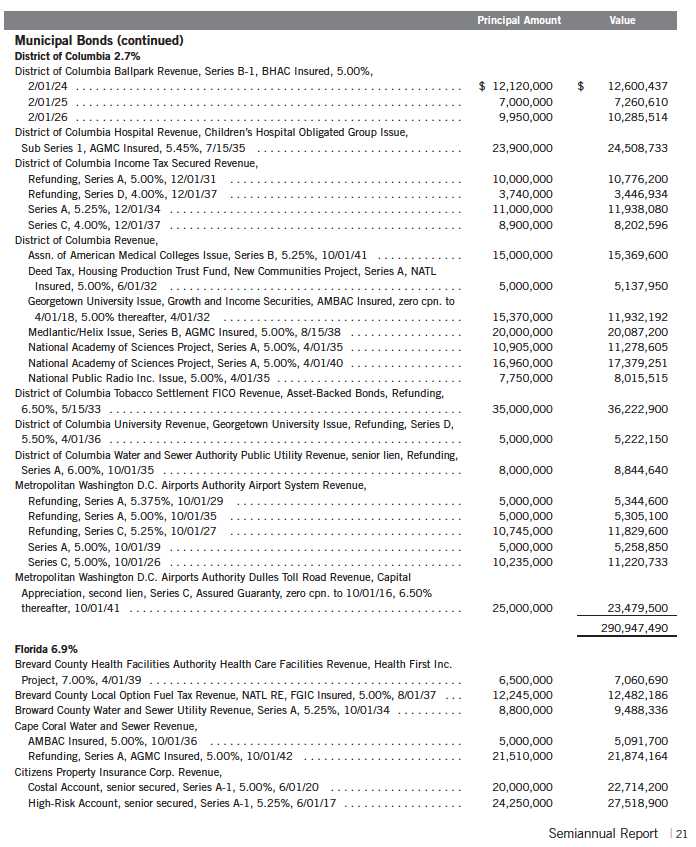
Franklin Federal Tax-Free Income Fund
Statement of Investments, October 31, 2013 (unaudited) (continued)
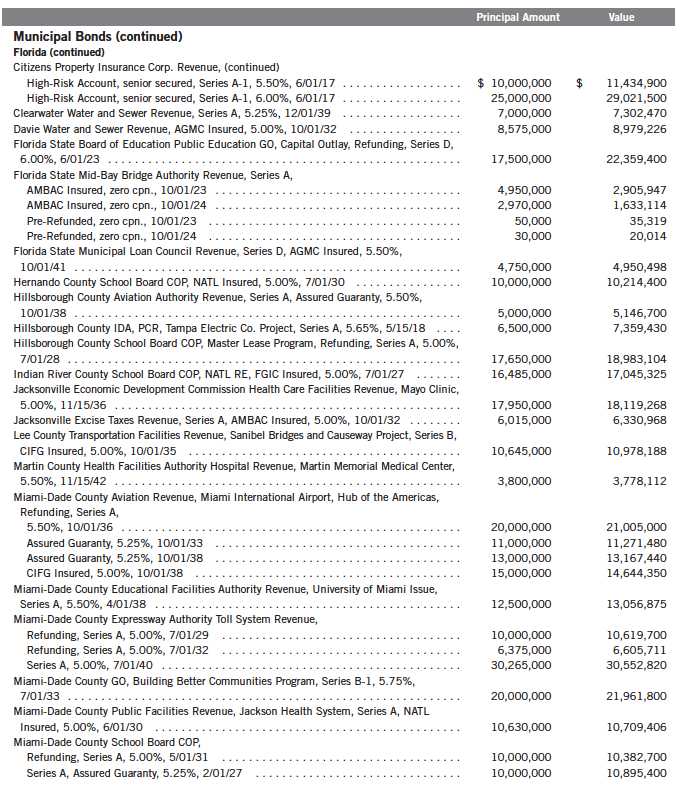
22 | Semiannual Report
Franklin Federal Tax-Free Income Fund
Statement of Investments, October 31, 2013 (unaudited) (continued)
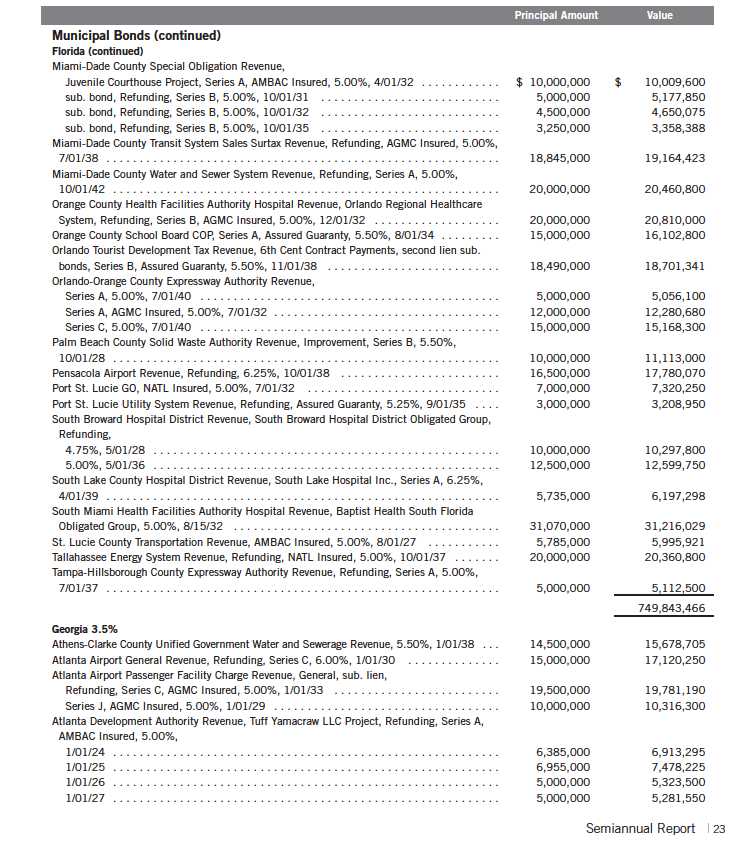
Franklin Federal Tax-Free Income Fund
Statement of Investments, October 31, 2013 (unaudited) (continued)
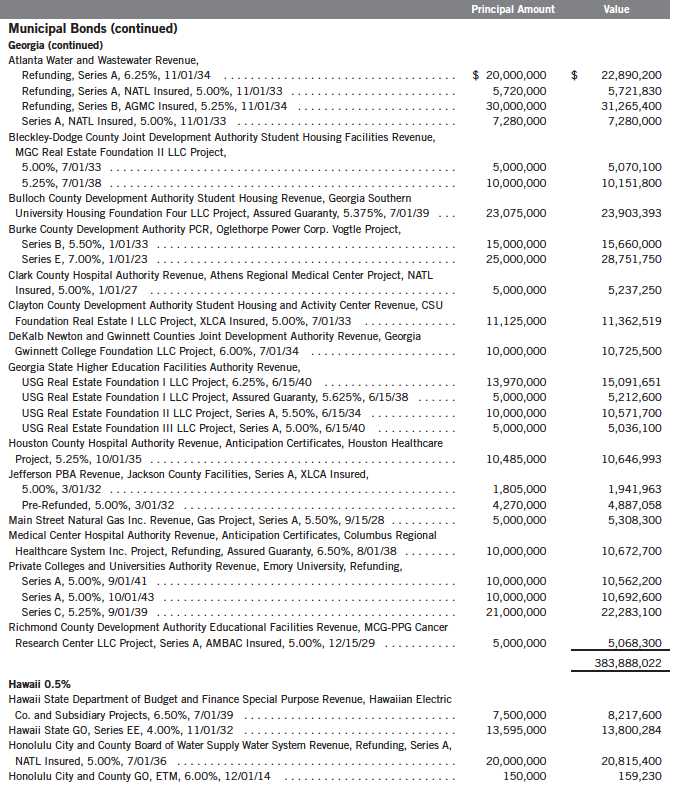
24 | Semiannual Report
Franklin Federal Tax-Free Income Fund
Statement of Investments, October 31, 2013 (unaudited) (continued)
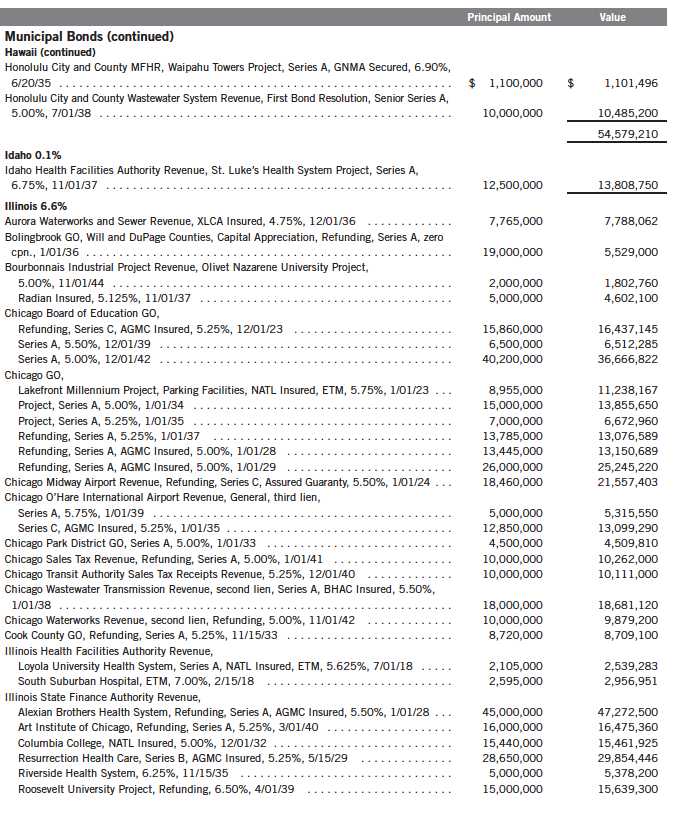
Semiannual Report | 25
Franklin Federal Tax-Free Income Fund
Statement of Investments, October 31, 2013 (unaudited) (continued)
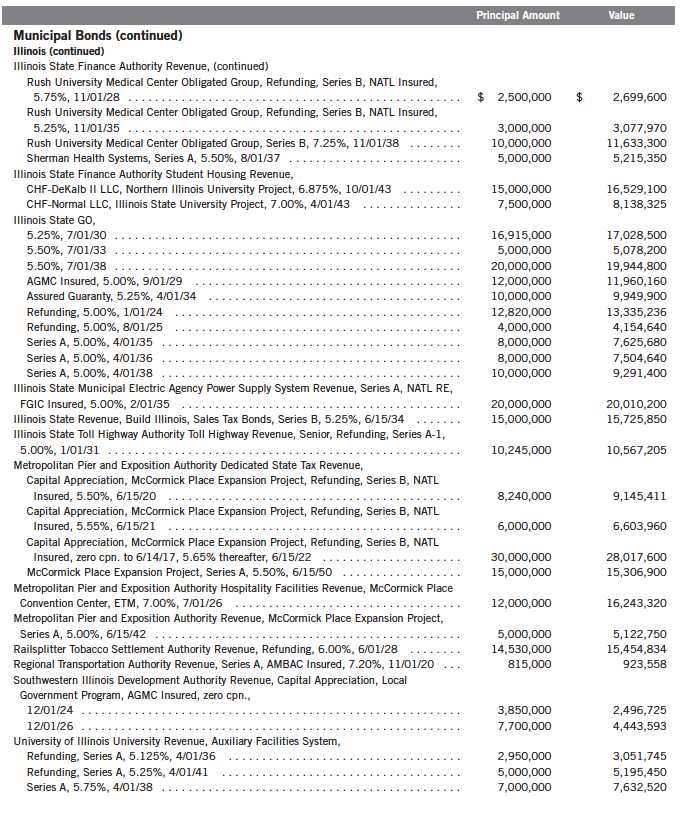
26 | Semiannual Report
Franklin Federal Tax-Free Income Fund
Statement of Investments, October 31, 2013 (unaudited) (continued)
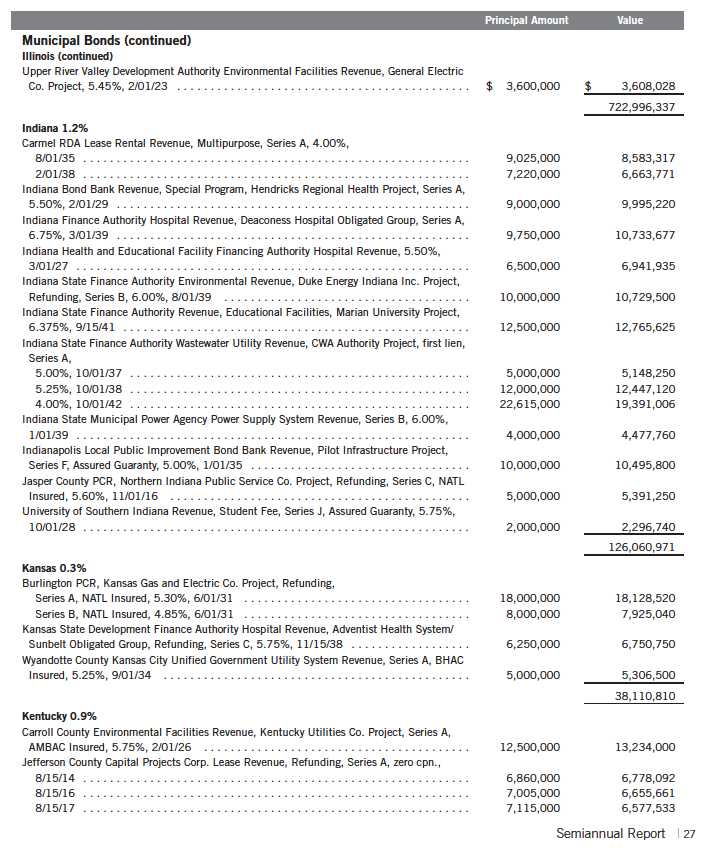
Franklin Federal Tax-Free Income Fund
Statement of Investments, October 31, 2013 (unaudited) (continued)
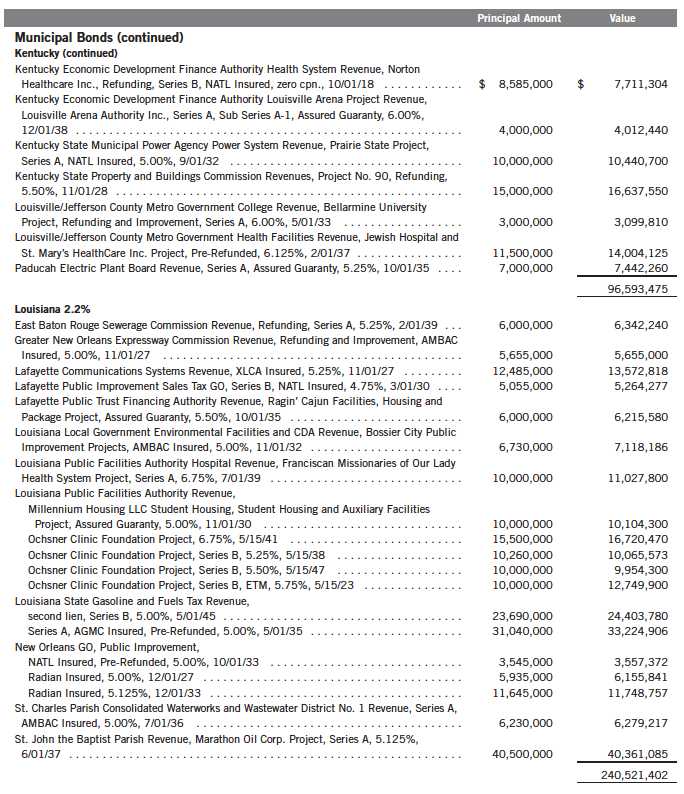
28 | Semiannual Report
Franklin Federal Tax-Free Income Fund
Statement of Investments, October 31, 2013 (unaudited) (continued)
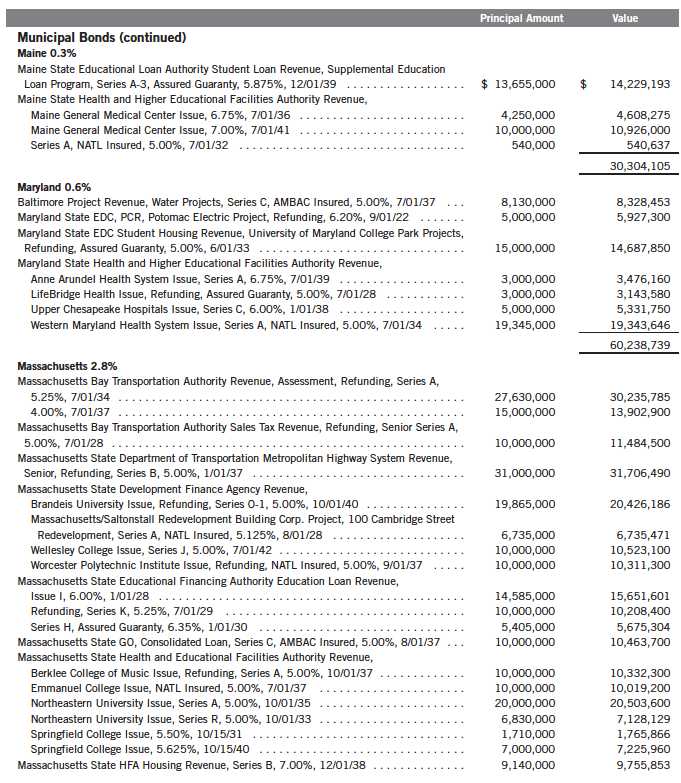
Semiannual Report | 29
Franklin Federal Tax-Free Income Fund
Statement of Investments, October 31, 2013 (unaudited) (continued)
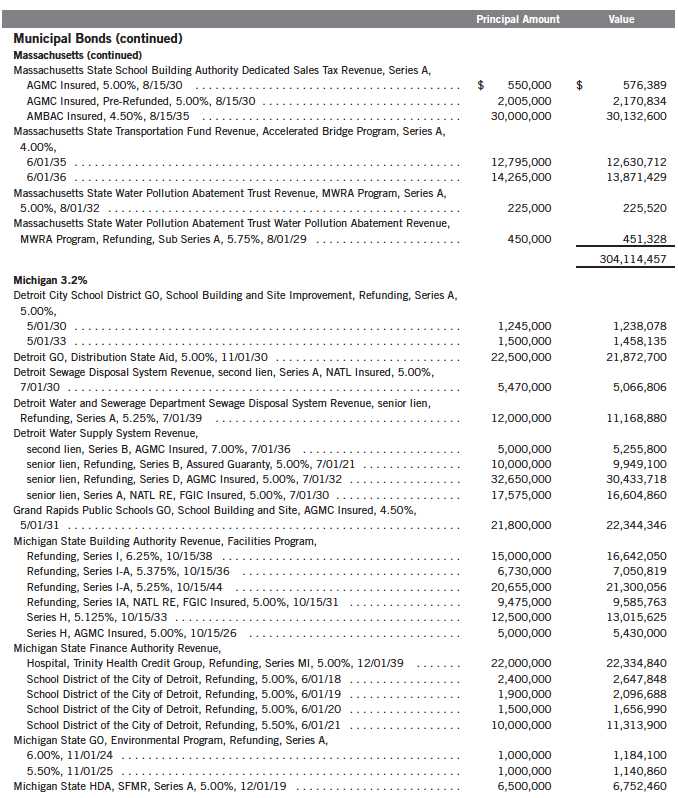
30 | Semiannual Report
Franklin Federal Tax-Free Income Fund
Statement of Investments, October 31, 2013 (unaudited) (continued)
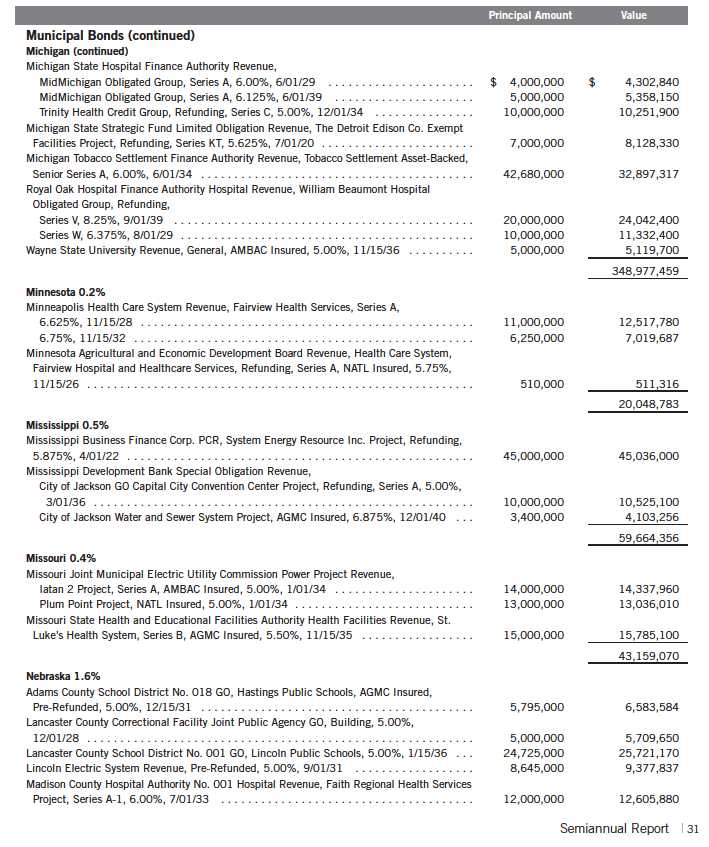
Franklin Federal Tax-Free Income Fund
Statement of Investments, October 31, 2013 (unaudited) (continued)
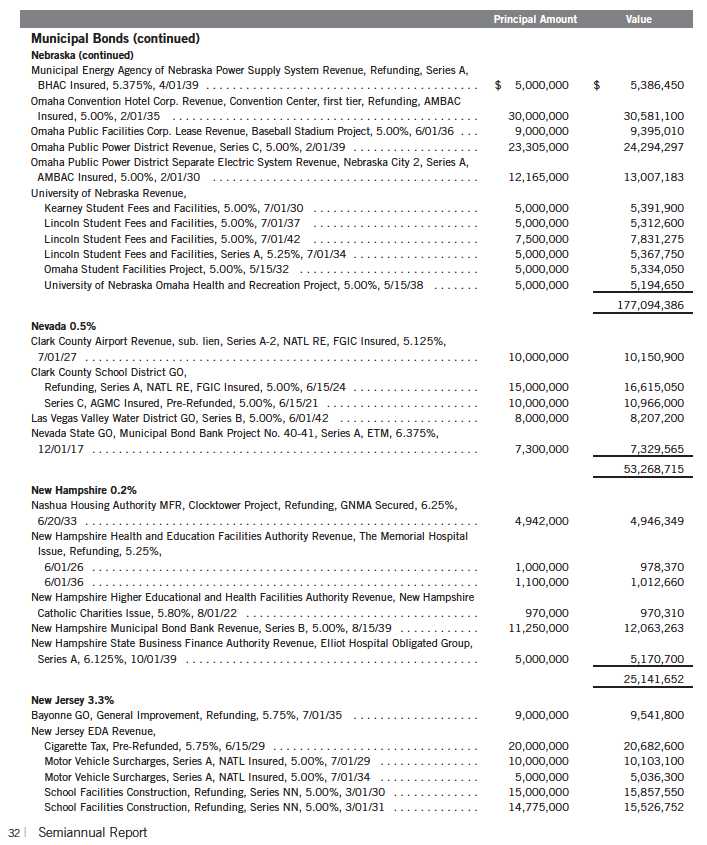
Franklin Federal Tax-Free Income Fund
Statement of Investments, October 31, 2013 (unaudited) (continued)
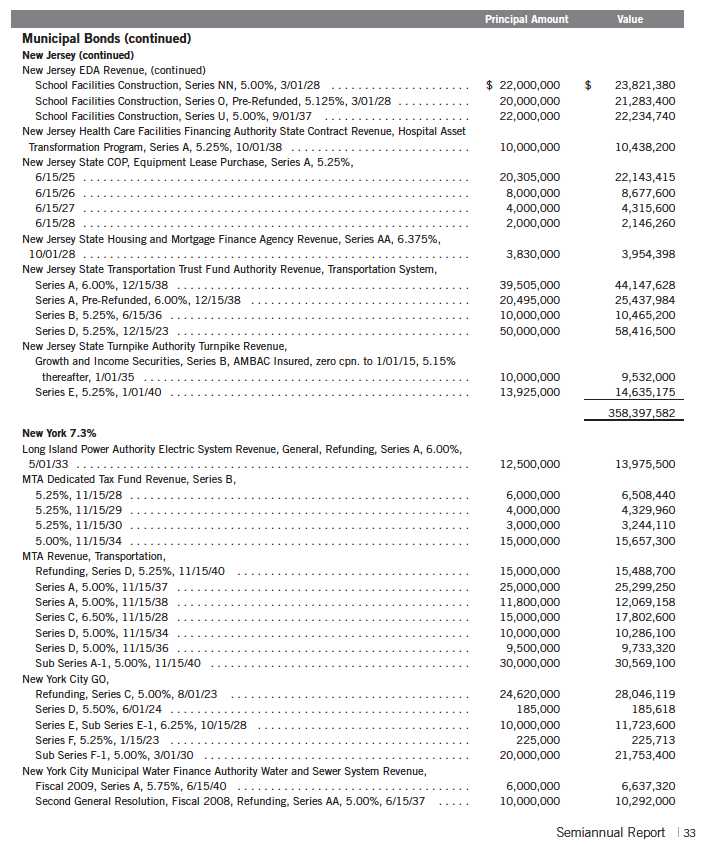
Franklin Federal Tax-Free Income Fund
Statement of Investments, October 31, 2013 (unaudited) (continued)
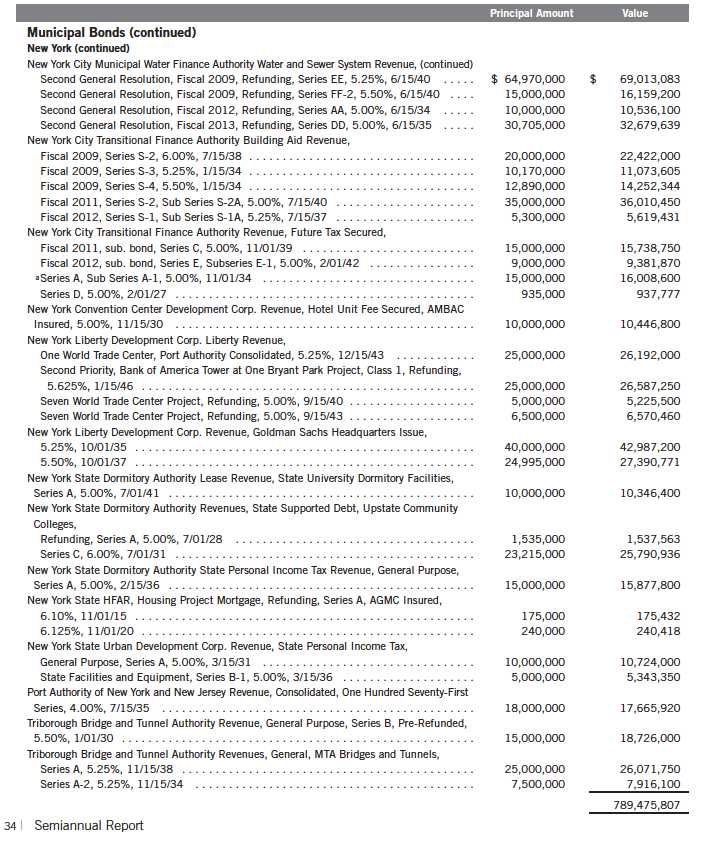
Franklin Federal Tax-Free Income Fund
Statement of Investments, October 31, 2013 (unaudited) (continued)
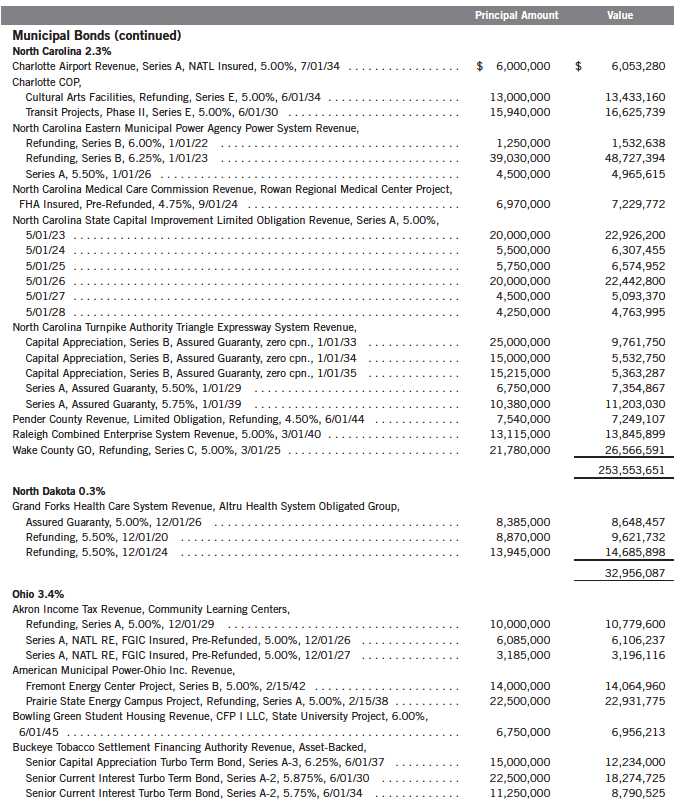
Semiannual Report | 35
Franklin Federal Tax-Free Income Fund
Statement of Investments, October 31, 2013 (unaudited) (continued)
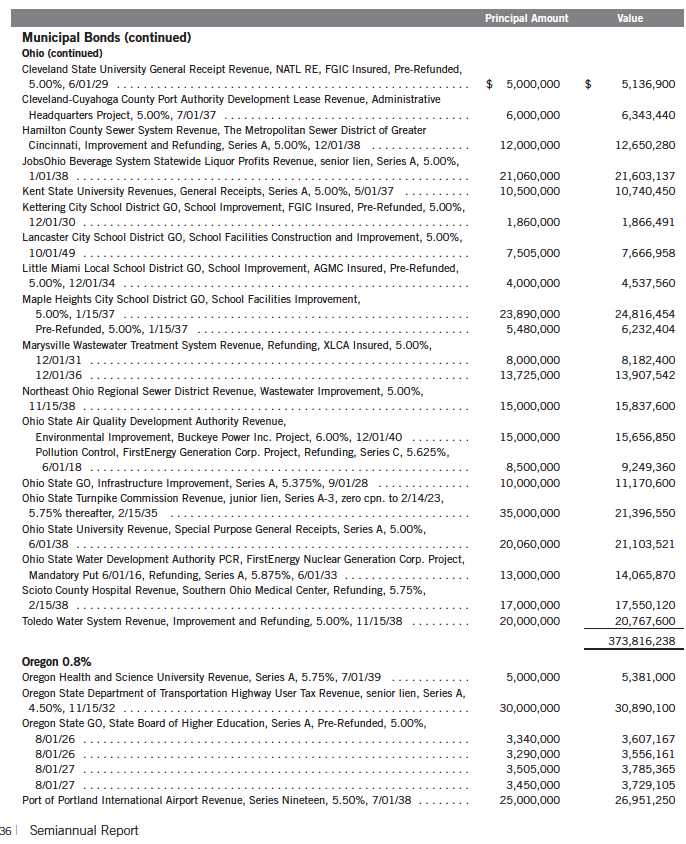
Franklin Federal Tax-Free Income Fund
Statement of Investments, October 31, 2013 (unaudited) (continued)

Franklin Federal Tax-Free Income Fund
Statement of Investments, October 31, 2013 (unaudited) (continued)
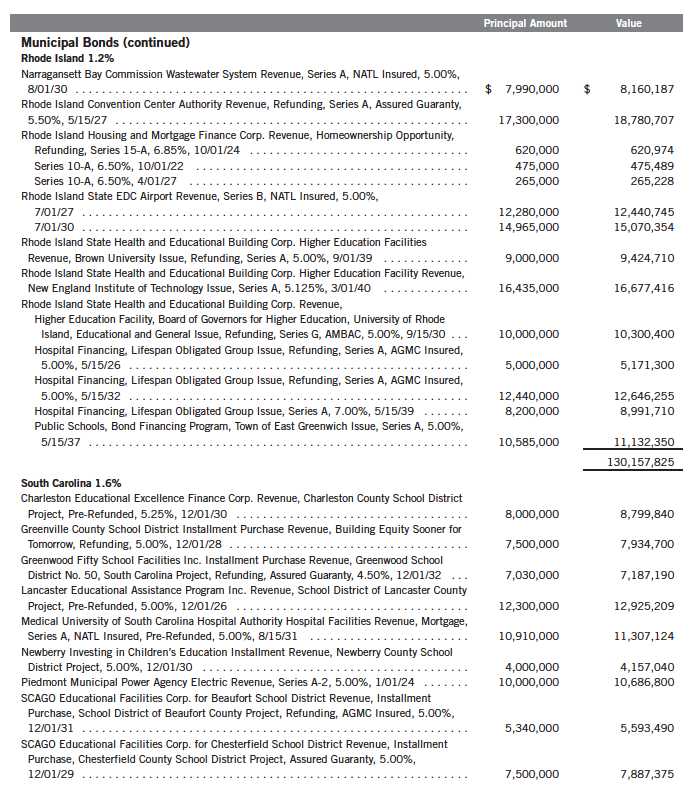
38 | Semiannual Report
Franklin Federal Tax-Free Income Fund
Statement of Investments, October 31, 2013 (unaudited) (continued)
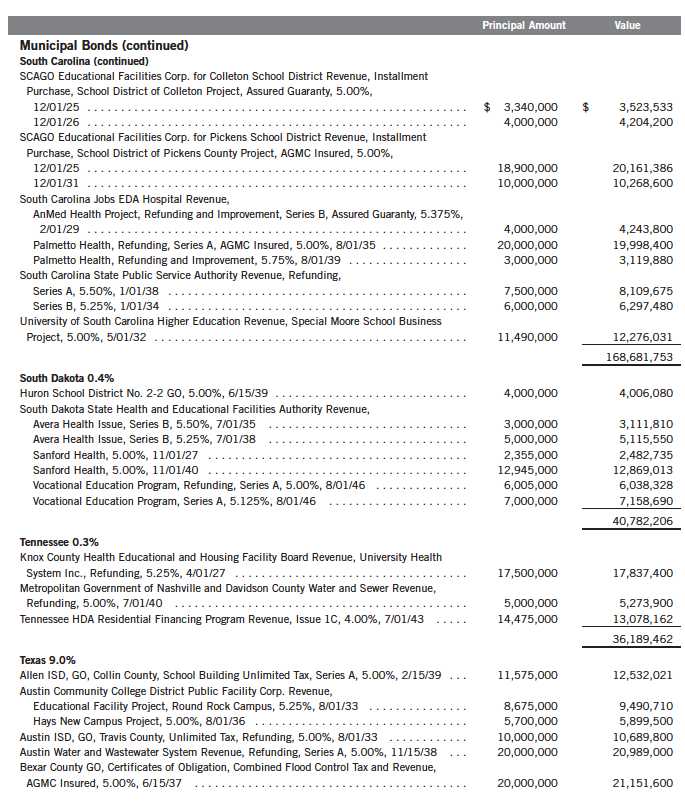
Semiannual Report | 39
Franklin Federal Tax-Free Income Fund
Statement of Investments, October 31, 2013 (unaudited) (continued)
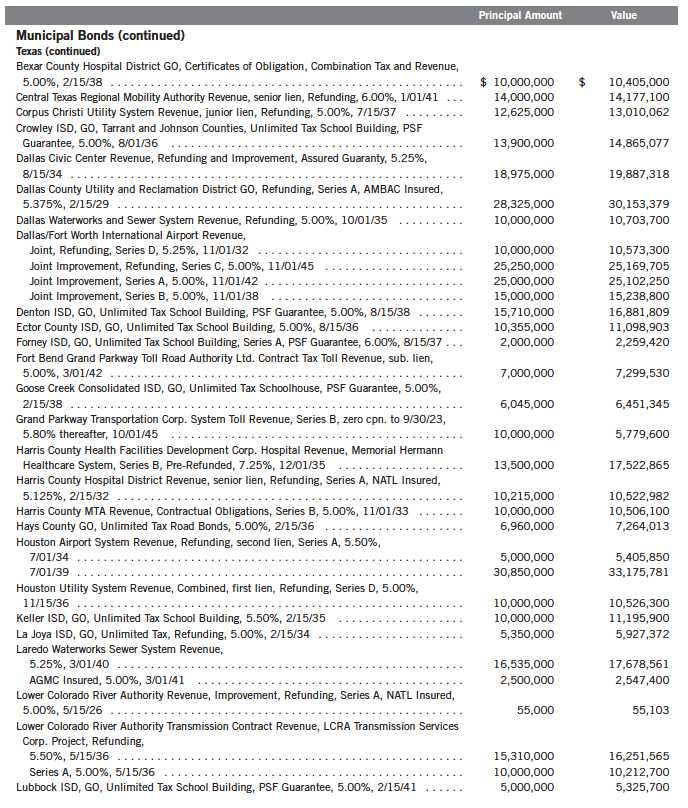
40 | Semiannual Report
Franklin Federal Tax-Free Income Fund
Statement of Investments, October 31, 2013 (unaudited) (continued)
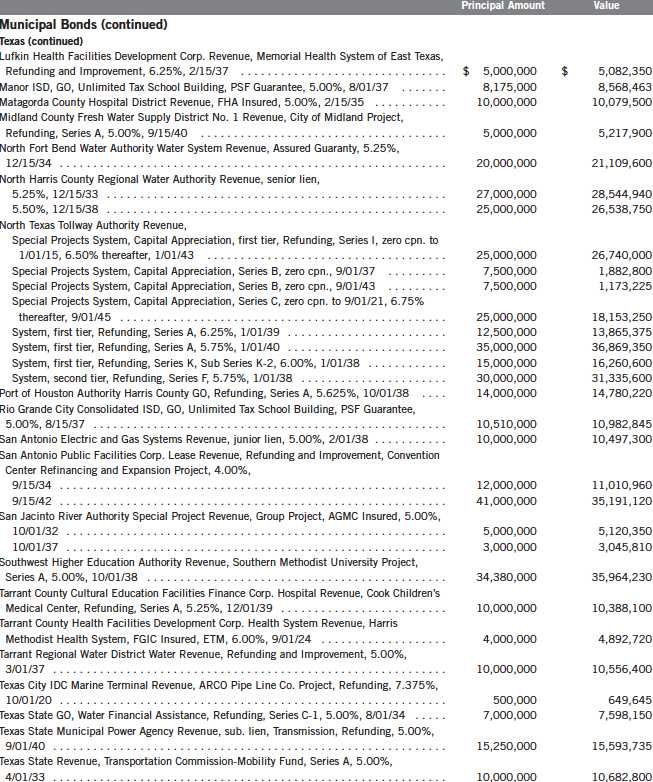
Semiannual Report | 41
Franklin Federal Tax-Free Income Fund
Statement of Investments, October 31, 2013 (unaudited) (continued)
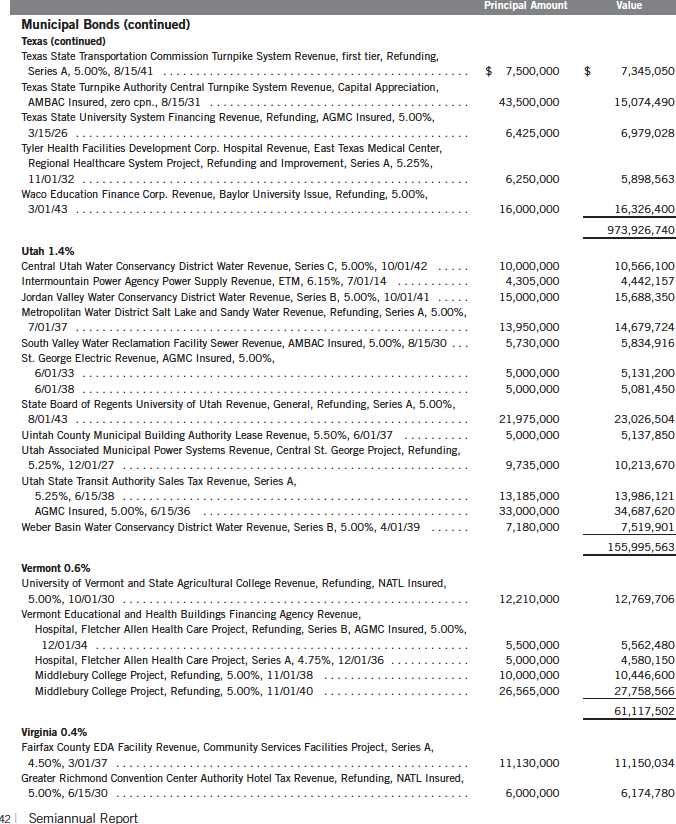
Franklin Federal Tax-Free Income Fund
Statement of Investments, October 31, 2013 (unaudited) (continued)
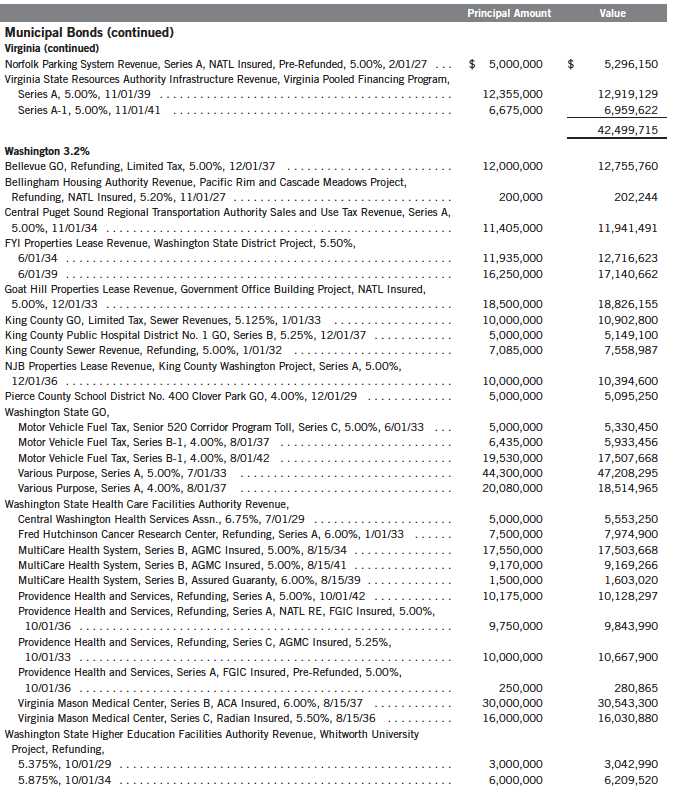
Semiannual Report | 43
Franklin Federal Tax-Free Income Fund
Statement of Investments, October 31, 2013 (unaudited) (continued)
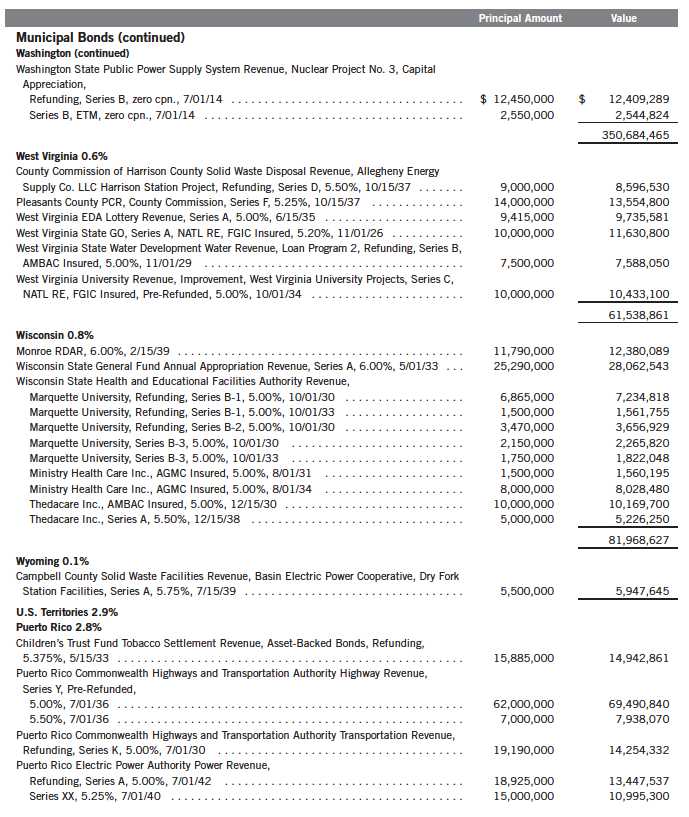
44 | Semiannual Report
Franklin Federal Tax-Free Income Fund
Statement of Investments, October 31, 2013 (unaudited) (continued)
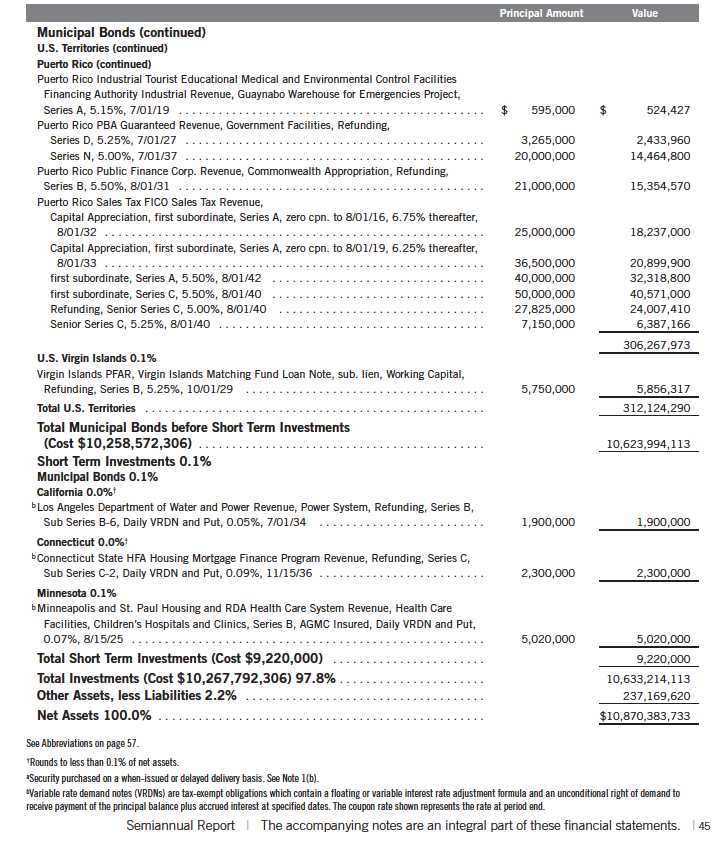
Franklin Federal Tax-Free Income Fund
Financial Statements
Statement of Assets and Liabilities
October 31, 2013 (unaudited)
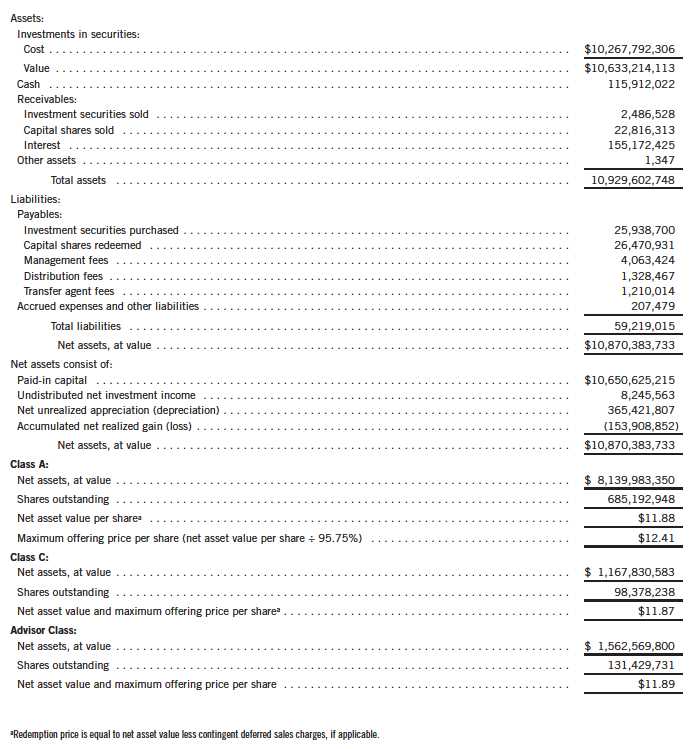
46 | The accompanying notes are an integral part of these financial statements. | Semiannual Report
Franklin Federal Tax-Free Income Fund
Financial Statements (continued)
Statement of Operations
for the six months ended October 31, 2013 (unaudited)
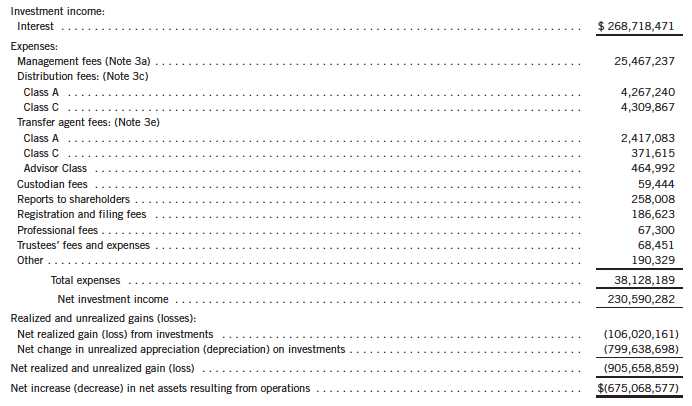
Semiannual Report | The accompanying notes are an integral part of these financial statements. | 47
Franklin Federal Tax-Free Income Fund
Financial Statements (continued)
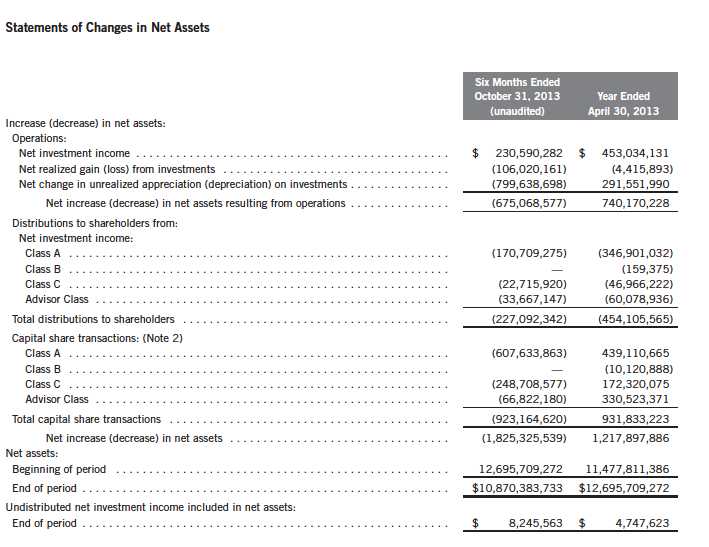
48 | The accompanying notes are an integral part of these financial statements. | Semiannual Report
Franklin Federal Tax-Free Income Fund
Notes to Financial Statements (unaudited)
1. ORGANIZATION AND SIGNIFICANT ACCOUNT POLICIES
Franklin Federal Tax-Free Income Fund (Fund) is registered under the Investment Company Act of 1940, as amended, (1940 Act) as an open-end investment company. The Fund offers three classes of shares: Class A, Class C, and Advisor Class. Each class of shares differs by its initial sales load, contingent deferred sales charges, voting rights on matters affecting a single class, its exchange privilege and fees primarily due to differing arrangements for distribution and transfer agent fees.
The following summarizes the Fund’s significant accounting policies.
a. Financial Instrument Valuation
The Fund’s investments in financial instruments are carried at fair value daily. Fair value is the price that would be received to sell an asset or paid to transfer a liability in an orderly transaction between market participants on the measurement date. Under procedures approved by the Fund’s Board of Trustees (the Board), the Fund’s administrator, investment manager and other affiliates have formed the Valuation and Liquidity Oversight Committee (VLOC). The VLOC provides administration and oversight of the Fund’s valuation policies and procedures, which are approved annually by the Board. Among other things, these procedures allow the Fund to utilize independent pricing services, quotations from securities and financial instrument dealers, and other market sources to determine fair value.
Debt securities generally trade in the over-the-counter market rather than on a securities exchange. The Fund’s pricing services use multiple valuation techniques to determine fair value. In instances where sufficient market activity exists, the pricing services may utilize a market-based approach through which quotes from market makers are used to determine fair value. In instances where sufficient market activity may not exist or is limited, the pricing services also utilize proprietary valuation models which may consider market characteristics such as benchmark yield curves, credit spreads, estimated default rates, anticipated market interest rate volatility, coupon rates, anticipated timing of principal repayments, underlying collateral, and other unique security features in order to estimate the relevant cash flows, which are then discounted to calculate the fair value.
The Fund has procedures to determine the fair value of financial instruments for which market prices are not reliable or readily available. Under these procedures, the VLOC convenes on a regular basis to review such financial instruments and considers a number of factors, including significant unobservable valuation inputs, when arriving at fair value. The VLOC primarily employs a market-based approach which may use related or comparable assets or liabilities, recent transactions, market multiples, book values, and other relevant information for the investment to determine the fair value of the investment. An income-based valuation approach may also be used in which the anticipated future cash flows of the investment are discounted to calculate fair value. Discounts may also be applied due to the nature or duration of any restrictions on the disposition of the investments. Due to the inherent uncertainty of valuations of such investments, the fair values may differ significantly from the values that would have been used had
Semiannual Report | 49
Franklin Federal Tax-Free Income Fund
Notes to Financial Statements (unaudited) (continued)
| 1. | ORGANIZATION AND SIGNIFICANT ACCOUNT POLICIES (continued) |
| a. | Financial Instrument Valuation (continued) |
an active market existed. The VLOC employs various methods for calibrating these valuation approaches including a regular review of key inputs and assumptions, transactional back-testing or disposition analysis, and reviews of any related market activity.
b. Securities Purchased on a When-Issued and Delayed Delivery Basis
The Fund purchases securities on a when-issued and delayed delivery basis, with payment and delivery scheduled for a future date. These transactions are subject to market fluctuations and are subject to the risk that the value at delivery may be more or less than the trade date purchase price. Although the Fund will generally purchase these securities with the intention of holding the securities, it may sell the securities before the settlement date. Sufficient assets have been segregated for these securities.
c. Income Taxes
It is the Fund’s policy to qualify as a regulated investment company under the Internal Revenue Code. The Fund intends to distribute to shareholders substantially all of its income and net realized gains to relieve it from federal income and excise taxes. As a result, no provision for U.S. federal income taxes is required.
The Fund recognizes the tax benefits of uncertain tax positions only when the position is “more likely than not” to be sustained upon examination by the tax authorities based on the technical merits of the tax position. As of October 31, 2013, and for all open tax years, the Fund has determined that no liability for unrecognized tax benefits is required in the Fund’s financial statements related to uncertain tax positions taken on a tax return (or expected to be taken on future tax returns). Open tax years are those that remain subject to examination and are based on each tax jurisdiction statute of limitation.
d. Security Transactions, Investment Income, Expenses and Distributions
Security transactions are accounted for on trade date. Realized gains and losses on security transactions are determined on a specific identification basis. Interest income and estimated expenses are accrued daily. Amortization of premium and accretion of discount on debt securities are included in interest income. Distributions to shareholders are recorded on the ex-dividend date and are determined according to income tax regulations (tax basis). Distributable earnings determined on a tax basis may differ from earnings recorded in accordance with accounting principles generally accepted in the United States of America. These differences may be permanent or temporary. Permanent differences are reclassified among capital accounts to reflect their tax character.
50 | Semiannual Report
Franklin Federal Tax-Free Income Fund
Notes to Financial Statements (unaudited) (continued)
| 1. | ORGANIZATION AND SIGNIFICANT ACCOUNT POLICIES (continued) |
| d. | Security Transactions, Investment Income, Expenses and Distributions (continued) |
These reclassifications have no impact on net assets or the results of operations. Temporary differences are not reclassified, as they may reverse in subsequent periods.
Realized and unrealized gains and losses and net investment income, not including class specific expenses, are allocated daily to each class of shares based upon the relative proportion of net assets of each class. Differences in per share distributions, by class, are generally due to differences in class specific expenses.
e. Insurance
The scheduled payments of interest and principal for each insured municipal security in the Fund are insured by either a new issue insurance policy or a secondary insurance policy. Some municipal securities in the Fund are secured by collateral guaranteed by an agency of the U.S. government. Depending on the type of coverage, premiums for insurance are either added to the cost basis of the security or paid by a third party.
Insurance companies typically insure municipal bonds that tend to be of very high quality, with the majority of underlying municipal bonds rated A or better. However, an event involving an insurer could have an adverse effect on the value of the securities insured by that insurance company. There is no guarantee the insurer will be able to fulfill its obligations under the terms of the policy.
f. Accounting Estimates
The preparation of financial statements in accordance with accounting principles generally accepted in the United States of America requires management to make estimates and assumptions that affect the reported amounts of assets and liabilities at the date of the financial statements and the amounts of income and expenses during the reporting period. Actual results could differ from those estimates.
g. Guarantees and Indemnifications
Under the Fund’s organizational documents, its officers and trustees are indemnified by the Fund against certain liabilities arising out of the performance of their duties to the Fund. Additionally, in the normal course of business, the Fund enters into contracts with service providers that contain general indemnification clauses. The Fund’s maximum exposure under these arrangements is unknown as this would involve future claims that may be made against the Fund that have not yet occurred. Currently, the Fund expects the risk of loss to be remote.
Semiannual Report | 51
Franklin Federal Tax-Free Income Fund
Notes to Financial Statements (unaudited) (continued)
2. SHARES OF BENEFICIAL INTEREST
At October 31, 2013, there were an unlimited number of shares authorized (without par value).
Transactions in the Fund’s shares were as follows:
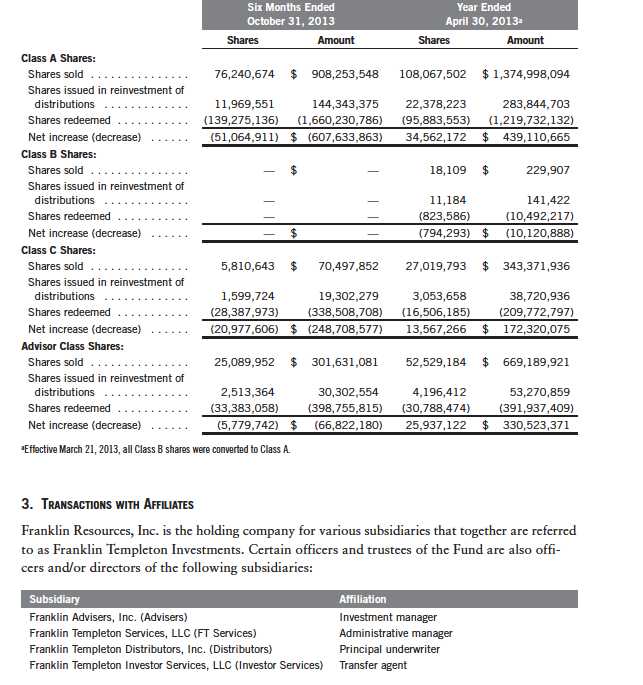
52 | Semiannual Report
Franklin Federal Tax-Free Income Fund
Notes to Financial Statements (unaudited) (continued)
| 3. | TRANSACTIONS WITH AFFILIATES (continued) |
| a. | Management Fees |
The Fund pays an investment management fee to Advisers based on the month-end net assets of the Fund as follows:

b. Administrative Fees
Under an agreement with Advisers, FT Services provides administrative services to the Fund. The fee is paid by Advisers based on the Fund’s average daily net assets, and is not an additional expense of the Fund.
c. Distribution Fees
The Board has adopted distribution plans for each share class, with the exception of Advisor Class shares, pursuant to Rule 12b-1 under the 1940 Act. Distribution fees are not charged on shares held by affiliates. Under the Fund’s Class A reimbursement distribution plan, the Fund reimburses Distributors for costs incurred in connection with the servicing, sale and distribution of the Fund’s shares up to the maximum annual plan rate. Under the Class A reimbursement distribution plan, costs exceeding the maximum for the current plan year cannot be reimbursed in subsequent periods. In addition, under the Fund’s Class C compensation distribution plan, the Fund pays Distributors for costs incurred in connection with the servicing, sale and distribution of the Fund’s shares up to the maximum annual plan rate. The plan year, for purposes of monitoring compliance with the maximum annual plan rates, is February 1 through January 31.
The maximum annual plan rates, based on the average daily net assets, for each class, are as follows:

Semiannual Report | 53
Franklin Federal Tax-Free Income Fund
Notes to Financial Statements (unaudited) (continued)
| 3. | TRANSACTIONS WITH AFFILIATES (continued) |
| d. | Sales Charges/Underwriting Agreements |
Front-end sales charges and contingent deferred sales charges (CDSC) do not represent expenses of the Fund. These charges are deducted from the proceeds of sales of Fund shares prior to investment or from redemption proceeds prior to remittance, as applicable. Distributors has advised the Fund of the following commission transactions related to the sales and redemptions of the Fund’s shares for the period:

e. Transfer Agent Fees
Each class of shares pays transfer agent fees to Investor Services for its performance of shareholder servicing obligations and reimburses Investor Services for out of pocket expenses incurred, including shareholding servicing fees paid to third parties. These fees are allocated daily based upon their relative proportion of such classes’ aggregate net assets.
For the period ended October 31, 2013, the Fund paid transfer agent fees of $3,253,690, of which $1,150,859 was retained by Investor Services.
4. INCOME TAXES
For tax purposes, capital losses may be carried over to offset future capital gains. Capital loss carryforwards with no expiration, if any, must be fully utilized before those losses with expiration dates.
At April 30, 2013, capital loss carryforwards were as follows:

For tax purposes, the Fund may elect to defer any portion of a post-October capital loss to the first day of the following fiscal year. At April 30, 2013, the Fund deferred post-October capital losses of $9,330,523.
54 | Semiannual Report
Franklin Federal Tax-Free Income Fund
Notes to Financial Statements (unaudited) (continued)
4. INCOME TAXES (continued)
At October 31, 2013, the cost of investments and net unrealized appreciation (depreciation) for income tax purposes were as follows:

Differences between income and/or capital gains as determined on a book basis and a tax basis are primarily due to differing treatments of bond discounts and wash sales.
5. INVESTMENT TRANSACTIONS
Purchases and sales of investments (excluding short term securities) for the period ended October 31, 2013, aggregated $740,806,741 and $1,605,270,221, respectively.
6. CREDIT FACILITY
The Fund, together with other U.S. registered and foreign investment funds (collectively, Borrowers), managed by Franklin Templeton Investments, are borrowers in a joint syndicated senior unsecured credit facility totaling $1.5 billion (Global Credit Facility) which matures on January 17, 2014. This Global Credit Facility provides a source of funds to the Borrowers for temporary and emergency purposes, including the ability to meet future unanticipated or unusually large redemption requests.
Under the terms of the Global Credit Facility, the Fund shall, in addition to interest charged on any borrowings made by the Fund and other costs incurred by the Fund, pay its share of fees and expenses incurred in connection with the implementation and maintenance of the Global Credit Facility, based upon its relative share of the aggregate net assets of all of the Borrowers, including an annual commitment fee of 0.07% based upon the unused portion of the Global Credit Facility. These fees are reflected in other expenses on the Statement of Operations. During the period ended October 31, 2013, the Fund did not use the Global Credit Facility.
Semiannual Report | 55
Franklin Federal Tax-Free Income Fund
Notes to Financial Statements (unaudited) (continued)
7. FAIR VALUE MEASUREMENTS
The Fund follows a fair value hierarchy that distinguishes between market data obtained from independent sources (observable inputs) and the Fund’s own market assumptions (unobservable inputs). These inputs are used in determining the value of the Fund’s financial instruments and are summarized in the following fair value hierarchy:
- Level 1 – quoted prices in active markets for identical financial instruments
- Level 2 – other significant observable inputs (including quoted prices for similar financial instruments, interest rates, prepayment speed, credit risk, etc.)
- Level 3 – significant unobservable inputs (including the Fund’s own assumptions in determining the fair value of financial instruments)
The input levels are not necessarily an indication of the risk or liquidity associated with financial instruments at that level.
For movements between the levels within the fair value hierarchy, the Fund has adopted a policy of recognizing the transfers as of the date of the underlying event which caused the movement.
At October 31, 2013, all of the Fund’s investments in financial instruments carried at fair value were valued using Level 2 inputs.
8. NEW ACCOUNTING PRONOUNCEMENTS
In June 2013, the Financial Accounting Standards Board issued Accounting Standards Update (ASU) No. 2013-08, Investment Companies (Topic 946): Amendments to the Scope, Measurement, and Disclosure Requirements. The ASU modifies the criteria used in defining an investment company under U.S. Generally Accepted Accounting Principles and also sets forth certain measurement and disclosure requirements. Under the ASU, an entity that is registered under the 1940 Act automatically qualifies as an investment company. The ASU is effective for interim and annual reporting periods beginning after December 15, 2013. The Fund is currently reviewing the requirements and believes the adoption of this ASU will not have a material impact on its financial statements.
9. SUBSEQUENT EVENTS
The Fund has evaluated subsequent events through the issuance of the financial statements and determined that no events have occurred that require disclosure.
56 | Semiannual Report
Franklin Federal Tax-Free Income Fund
Notes to Financial Statements (unaudited) (continued)
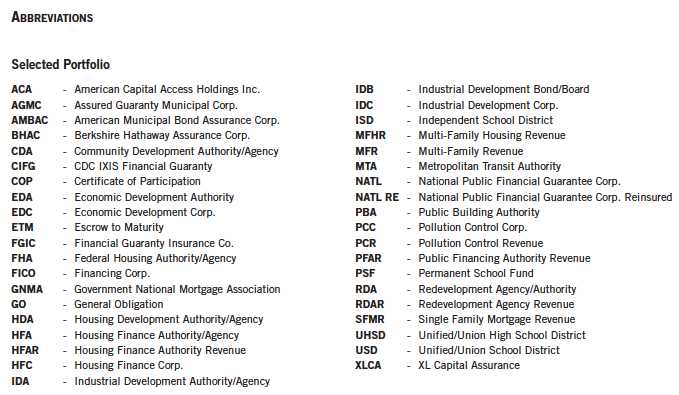
Semiannual Report | 57
Franklin Federal Tax-Free Income Fund
Shareholder Information
Proxy Voting Policies and Procedures
The Fund’s investment manager has established Proxy Voting Policies and Procedures (Policies) that the Fund uses to determine how to vote proxies relating to portfolio securities. Shareholders may view the Fund’s complete Policies online at franklintempleton.com. Alternatively, shareholders may request copies of the Policies free of charge by calling the Proxy Group collect at (954) 527-7678 or by sending a written request to: Franklin Templeton Companies, LLC, 300 S.E. 2nd Street, Fort Lauderdale, FL 33301, Attention: Proxy Group. Copies of the Fund’s proxy voting records are also made available online at franklintempleton.com and posted on the U.S. Securities and Exchange Commission’s website at sec.gov and reflect the most recent 12-month period ended June 30.
Quarterly Statement of Investments
The Fund files a complete statement of investments with the U.S. Securities and Exchange Commission for the first and third quarters for each fiscal year on Form N-Q. Shareholders may view the filed Form N-Q by visiting the Commission’s website at sec.gov. The filed form may also be viewed and copied at the Commission’s Public Reference Room in Washington, DC. Information regarding the operations of the Public Reference Room may be obtained by calling (800) SEC-0330.
58 | Semiannual Report
This page intentionally left blank.
This page intentionally left blank.
